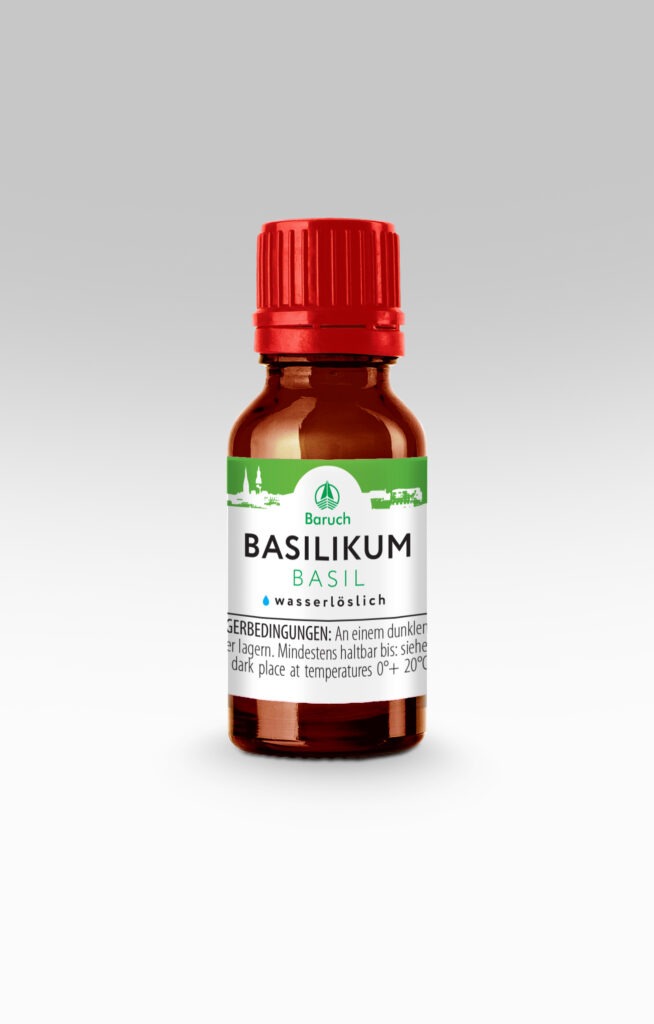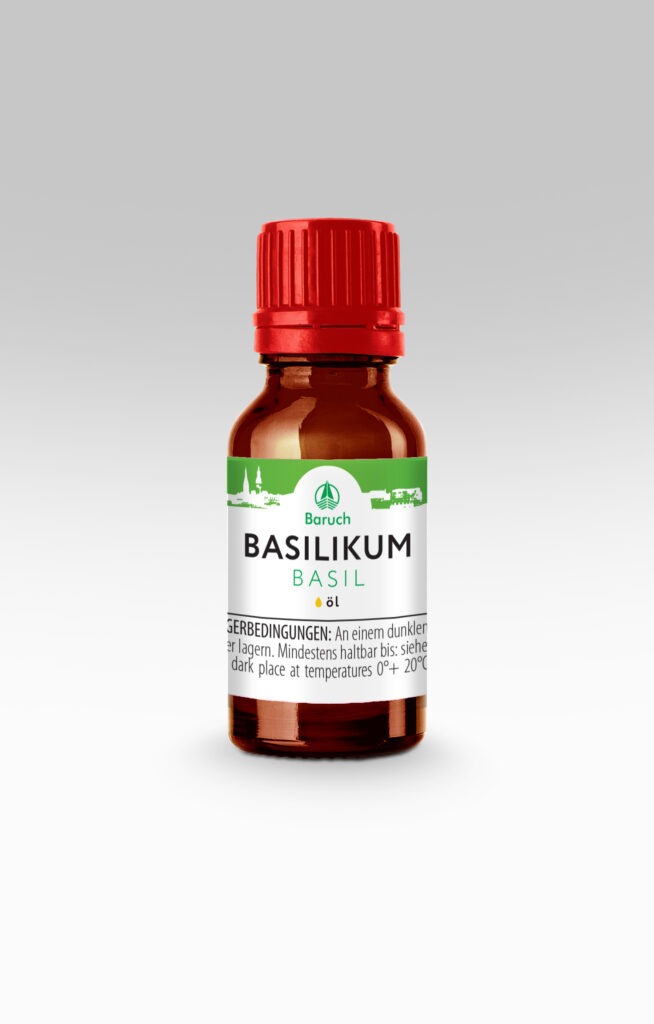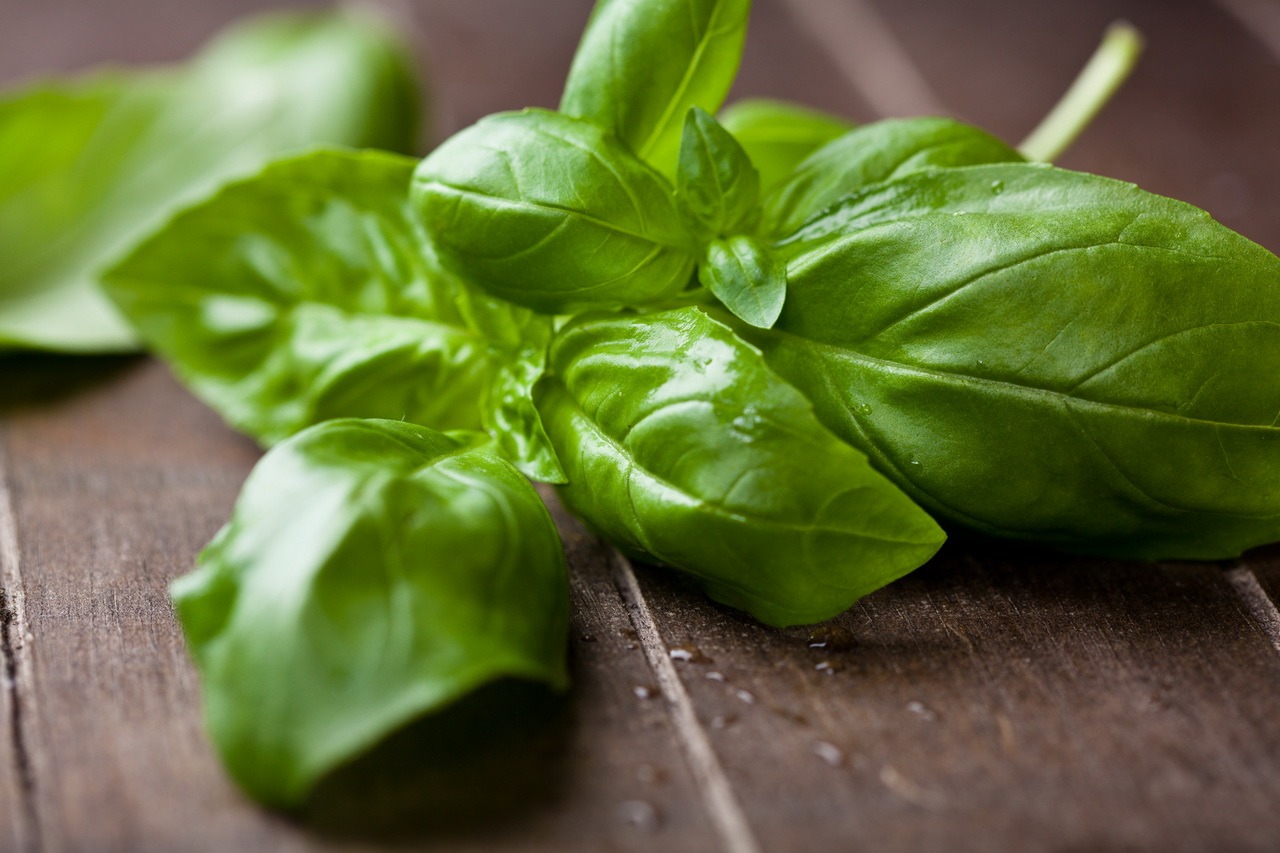Basil (Ocimum basilicum), also known as basil, basil herb or royal herb, is a herb from the basil genus of the same name (Ocimum) in the mint family. There are red-leaved and green-leaved varieties of basil. The differences in chemical composition are mainly that the red-leaved forms have an increased content of anthocyanins in the leaves and stems, but the compositions of fat-soluble compounds, including aromatic substances, are practically the same. Dry basil plant matter consists primarily of the green matter of eugenol basil, but usually contains an admixture of dry leaves of sweet basil, which is the most attractive and mint-leaved. Eugenol basil is characterized by the fact that its dry raw material contains an increased content of eugenol.
In the pharmacopoeia, basil-based substances are included in the composition of medicines and dietary supplements to lower the temperature, stop joint pain, fight colds and chills. Such substances are recommended for drugs that improve the condition of the intestines, stimulate appetite and digestion, diuretics. In folk medicine, basil is used to relieve toothache, treat rheumatism and alcoholism.
Basil is one of the oldest spice plants. Essential oils and more recently CO2 extracts from basil are used to flavor beverages, vegetable juices, marinades, sauces and confectionery. Basil CO2 extracts combined with rosemary and savory CO2 extracts can be used as an ingredient in blends to complement black pepper. In European countries and the USA, basil is used to flavor tea. For the production of non-alcoholic and alcoholic beverages, however, the use of a basil CO2 micro-emulsion is recommended, which has all the properties of a 100% CO2 extract but forms stable, optically transparent pseudo-solutions in water and water-alcohol mixtures.
100% Basil Extract is a yellowish-orange, viscous, flowing liquid with a pungent, specific odor.


Chart 1. Main components of basil CO2 extract
| NAME | CONTENT IN% OF THE AMOUNT OF VOLATILE COMPONENTS | EFFECT |
|---|---|---|
| Linalool | 25 | Anticonvulsant, bactericidal, antispasmodic |
| Estragole | 13 | Component of perfumery compositions |
| Eugenol | 9 | Used in perfumery compositions as a fragrance for tobacco, in dentistry – “oil of clove”, painkiller, biocide |
| Trans-Methylcinnamate | 7 | Component of perfumery compositions |
| α-Bergamotene | 6 | Used in perfume compositions, in leukoderma and psoriasis, antispasmodic |
| T-Kadinol | 4,6 | Antirheumatic drug, used to treat ulcers, burns, boils |
| Y-Kadinen | 1,9 | Used to treat lung diseases, including tuberculosis |
| Squalene | 1,7 | Anticarcinogenic, antimicrobial and fungicidal action. Saturates tissues with oxygen, which contributes to their rejuvenation |
| Methyleugenol | 1 | Used in perfumery compositions as a fragrance for tobacco, in dentistry – “oil of clove”, painkiller, biocide |
| Methyl jasmonate | 0,9 | Jasmine component of perfume compositions, antidepressant, immunomodulator. For the treatment of eczema, dry, irritated skin |
| Camphor | 0,2 | Tones the respiratory center, stimulates heart activity. Narrows peripheral blood vessels, improves blood flow in capillaries |
More than 70 compounds with biological activity have been identified in basil CO2 extract.
In cosmetics, basil CO2 extract is valued as an antioxidant, antimicrobial and anti-inflammatory supplement for oily skin. Basil CO2 Extract is also recommended for use in cosmetic emulsion products in the following areas:
- Moisturizers
- Products for the care of mature skin to increase its firmness and elasticity
- to fight acne and reduce pores
Basil is an indispensable part of the popular Herbs de Provence and Italian herbs, without which French and Italian cuisine would be unthinkable. Both blends are available in our range as the composition of the respective CO2 extracts, if you are interested in trying them in the manufacture of your products, please contact us for samples.
The most popular dish with basil is the Baku salad, also called Baku tomato salad. There are many recipes for this dish, but there are only three constant ingredients: basil, soft cheese (mostly cheese), and sliced medium tomatoes. A little less popular, but also well known in this country, the Italian version of this salad is called “Caprese” and is characterized by the use of mozzarella instead of cheese.
Due to the property of basil to form pleasant flavor combinations with tomato products, very good results have been achieved when using basil CO2 extract microemulsion in the production of tomato juice and juice mixtures based on it. For these purposes, basil is usually used in compositions containing various peppers (black, allspice, red), as well as a number of other ingredients.
Microemulsions of basil CO2 extract have also found interesting applications in the production of lemonades, especially in combination with ginger and lavender.
Basil is an excellent ingredient for all kinds of sauces. In particular, one of the most famous Italian sauces, pesto, which has become one of the symbols of Italian cuisine, contains basil as one of the main ingredients in many recipes.
It is also promising to use the CO2 extract (and in particular the microemulsion based on it) of basil for the production of ketchups and tomato sauces. In addition, basil goes well with eggs and egg-based products, which makes it very suitable as an ingredient in mayonnaise (in this case, both CO2 extracts in their native form and microemulsions can be used).
In the confectionery industry and ice cream production, CO2 extract from basil is still used to a limited extent, but there are also promising developments in this area.
Chart 2. Application rates, recommendations for the use and storage of basil CO2 extract
| Food usage rates | Item A100: 0.003% (30 g per ton) Water-soluble microemulsions EMA1: 0.2% (2 l per 1000 l or 2 ml per liter) |
| Application rates in cosmetics | Item А10: 1-3% Item А100: 0.1-0.3% |
| Recommendations for use | It is recommended to add CO2 extracts in the final stages of preparation, in the cooling phase of the end product. |
| Storage Instructions | It is recommended to store CO2 extracts in a closed container in a cool room and avoid direct sunlight. |
Historical reference
The origin of the name “basil” comes from the Greek “basileus”, i.e. the sovereign, the ruler – in the Eastern Roman Empire (Byzantium) collecting this plant was considered a royal privilege. Oddly enough, many of the most ridiculous superstitions are related to basil – in ancient times in particular, there was a belief that if you smell basil, a scorpion will appear in your brain. Known in Europe since ancient times, however, it gained popularity since the 17th-18th centuries. It gained true popularity in the 19th century, when French and Italian culinary specialists made it the “king of spices”.
